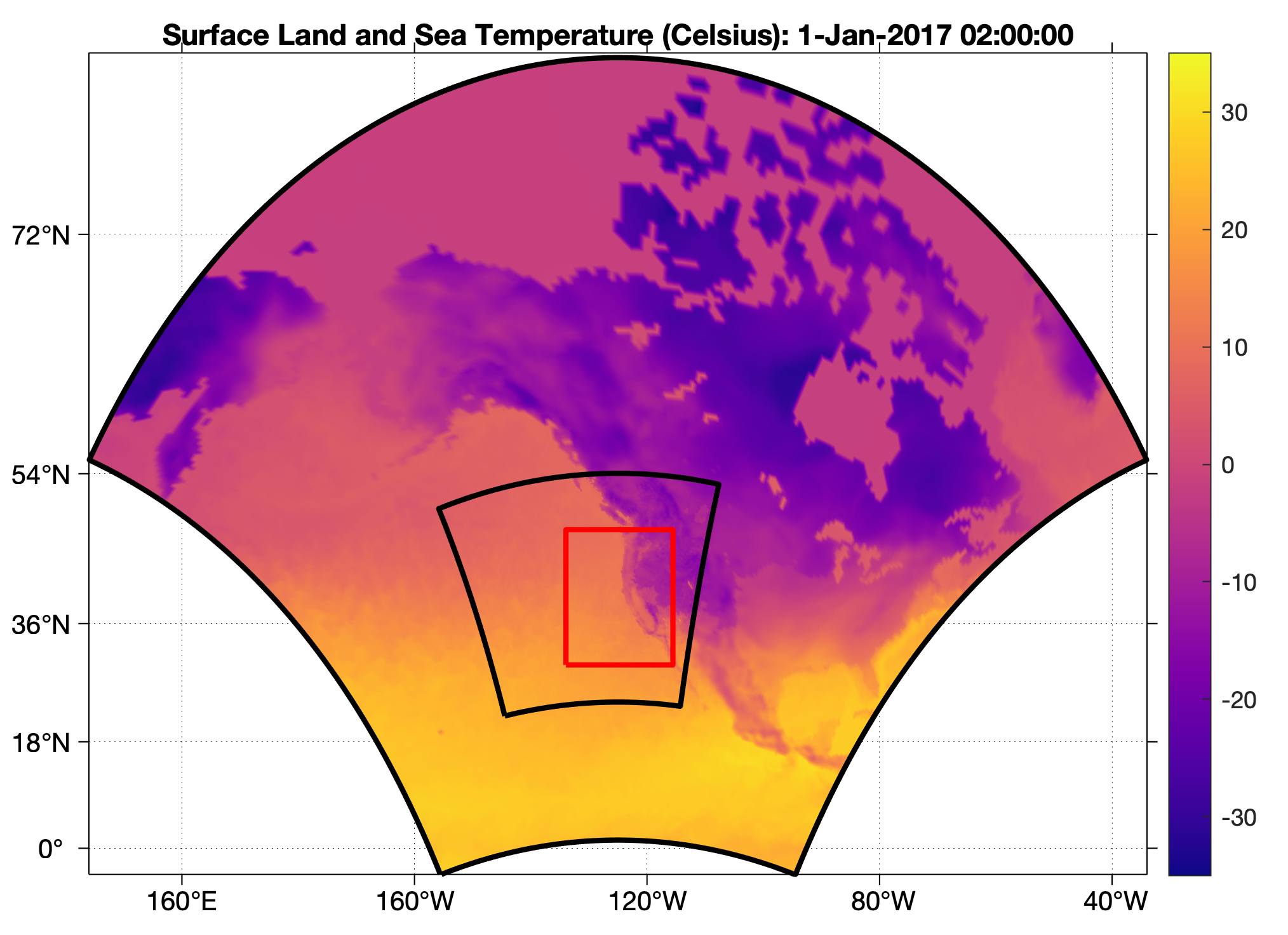Custom Query (986 matches)
Results (706 - 708 of 986)
|
Ticket
|
Owner
|
Reporter
|
Resolution
|
Summary
|
| #844 |
|
arango
|
Done
|
IMPORTANT: Some enhacements
|
| Description |
Added coupled of enhancements:
- Added the capability to write surface air temperature (Tair) to history, quicksave and average, output NetCDF files. Sometimes it is advantageous to write out the air temperature used in the net surface heat fluxes when BULK_FLUX or atmospheric coupling is activated.
The standard input script roms.in includes:
...
Hout(idTair) == F ! Tair surface air temperature
...
Qout(idTair) == F ! Tair surface air temperature
...
Aout(idTair) == F ! Tair surface air temperature
Warning: All the ROMS standard input files were modified to include the logical switches to write out surface air temperature including the one on the test repository.
Code was added to the output routines def_avg.F, wrt_avg.F, wrt_his.F, and wrt_quick.F. The files def_his.F and def_quick.F already have the definitions for adding Tair.
- Updated ESMF coupling input script coupling_esmf.in to include the nested grid number (NestedGrid keyword) when merging field from DATA and ESM components.
! Weighted coefficients for the merging of DATA component fields with the same
! field from other ESM components. Melding coefficients are positive and MUST
! add to unity. They are read from an input NetCDF file ('WeightsFile'). The
! user needs to specify the NetCDF variable names for the weights for the DATA
! ('VnameDATA') and ESM ('VnameESM') components. Also, specify which grid
! ('NestedGrid') needs a merged field from DATA and ESM components. Currently,
! the weight values are only needed by the atmosphere component.
WeightsFile(atmos) = meld_weights_atm.nc
VnameDATA(atmos) = data_weight
VnameESM(atmos) = ocean_weight
NestedGrid(atmos) = 1
It is possible to couple directly with one of the nested grids only, for example:

Here, the red box is the regional ROMS grid, while the black domains are the atmospheric coarser (45km) and finer nest (15km) grids. The coupling between the ROMS and the atmospheric model can be done with either the coarser grid (NestedGrid(atmos)=1) or the refined grid (NestedGrid(atmos)=2). The DATA component is used to provide SST in grid cells not covered by ROMS. The weighted coefficients are used to meld DATA (SST from HyCOM) and ROMS components.
- Added new item (debug_write) to coupling metadata file coupling_esmf.dat to specify which excanged field(s) are written into NetCDF files during debugging (DebugLevel > 2) to avoid generating lot and lots of files:
'SST'
'sea_surface_temperature' ! standard name
'sea surface temperature'
't(:,:,N,itemp)', 'ROMS' ! source variable, ROMS
'C' ! source units
'Center' ! source grid-cell
'tsea', 'COAMPS' ! destination variable, COAMPS
'K' ! destination units
'Center' ! destination grid-cell
'SST' ! DATA Model file variable
'bilinear' ! regridding method
'none' ! unmapped extrapolation method
.TRUE. ! connected to coupler
.FALSE. ! debug write into a NetCDF file
273.15d0 ! importing add offset
1.0d0 ! importing scale
|
| #845 |
|
kate
|
Fixed
|
Tracer advection settings
|
| Description |
The T and S advection schemes are read in read_phypar.F and ThreeGhostPoints is then set accordingly. It isn't until much later in inp_par.F that the biology, etc. advection schemes are read. If I have the old standard U3 for T and S and something fancier for biology, ThreeGhostPoints is not being set.
|
| #846 |
|
arango
|
Fixed
|
IMPORTANT: Corrected ad_step3d_t.F, tl_step3d_t.F, and rp_step3d_t.F
|
| Description |
The logical switch Lmpdata is located in the wrong place in ad_step3d_t.F, tl_step3d_t.F, and rp_step3d_t.F:
!
!-----------------------------------------------------------------------
! Time-step horizontal advection term.
!-----------------------------------------------------------------------
!
Lmpdata=ANY(tl_Hadvection(:,ng)%MPDATA).and. &
& ANY(tl_Vadvection(:,ng)%MPDATA)
It needs to be located outside of the AD_SUPPORTED, TL_SUPPORTED, and RP_SUPPORTED directives, repectively.
Many thanks to Julia Levin for bringing this to my attention.
|
Note:
See
TracQuery
for help on using queries.

